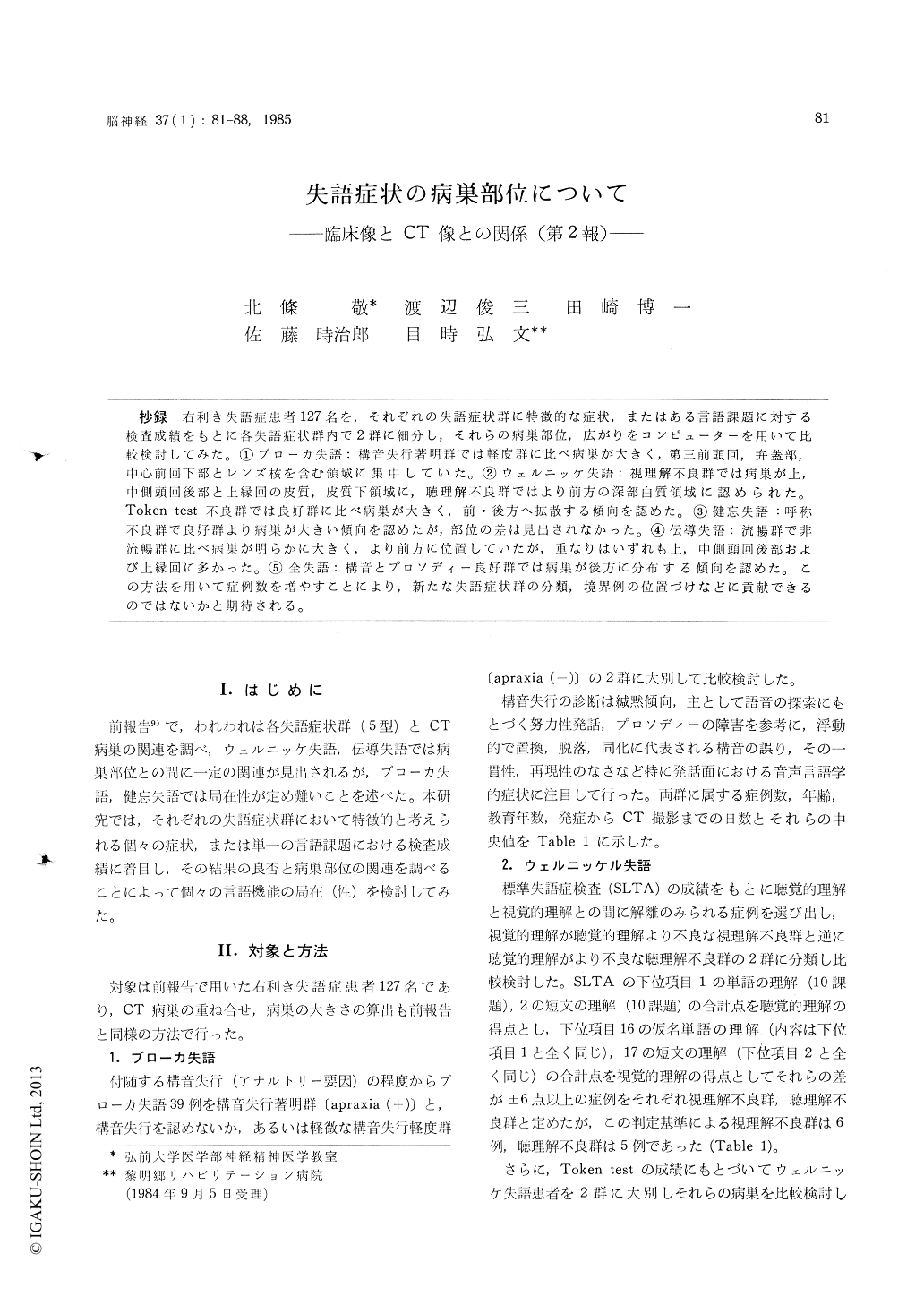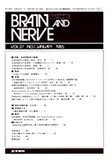Japanese
English
- 有料閲覧
- Abstract 文献概要
- 1ページ目 Look Inside
抄録 右利き失語症患者127名を,それぞれの失語症状群に特徴的な症状,またはある言語課題に対する検査成績をもとに各失語症状群内で2群に細分し,それらの病巣部位,広がりをコンピューターを用いて比較検討してみた。①ブローカ失語:構音失行著明群では軽度群に比べ病巣が大きく,第三前頭回,弁蓋部,中心前回下部とレンズ核を含む領域に集中していた。②ウェルニッケ失語:視理解不良群では病巣が上,中側頭回後部と上縁回の皮質,皮質下領域に,聴理解不良群ではより前方の深部白質領域に認められた。Token test不良群では良好群に比べ病巣が大きく,前・後方へ拡散する傾向を認めた。③健忘失語:呼称不良群で良好群より病巣が大きい傾向を認めたが,部位の差は見出されなかった。④伝導失語:流暢群で非流暢群に比べ病巣が明らかに大きく,より前方に位置していたが,重なりはいずれも上,中側頭回後部および上縁回に多かった。⑤全失語:構音とプロソディー良好群では病巣が後方に分布する傾向を認めた。この方法を用いて症例数を増やすことにより,新たな失語症状群の分類,境界例の位置づけなどに貢献できるのではないかと期待される。
On the basis of the characteristic symptoms or the result of a speech examination, 127 right-handed cases with various types of aphasia were subdivided into two groups within each aphasicsyndrome. Using a microcomputer, the locus and extent of the lesions, as demonstrated by computed tomography for each group were superimposed onto standardized matrices. The relationship be-tween the focus and the extent of the lesions and the various symptoms was investigated.
1. Broca aphasics : More than 80% of the group with obvious anarthric components had lesions of the third frontal gyrus involving Broca's area and the lower part of the precental gyrus as well as opercular and insular regions. The size of the le-sions of this group was significantly larger than that of the group without marked anarthric com-ponents, and the latter was proved to have little localizing value.
2. Wernicke aphasics : The group with poor reading comprehension had cortical and/or subcor-tical lesions, involving posterior parts of both superior and middle temporal gyri as well as the supramarginal gyrus. On the other hand, lesions of the group with poor auditory comprehension were more anteriorly located and localized in the deep structures. Lesions of the group with poor Token test scores were large and scattered more anteriorly and/or posteriorly compared with those of the group with good Token test scores.
3. Amnestic aphasics : The group with poor naming scores had somewhat larger lesions than the group with good naming scores, and the lesions were scattered about the left hemisphere. The finding has proved that both groups had little localizing value.
4. Conduction aphasics : Lesions of the non-fluent type were significantly larger than those of the fluent type and distributed more anteriorly. How-ever, highly involved lesions were located in the supramarginal gyrus and posterior parts of super-ior and/or middle temporal gyri.
5. Global aphasics : Lesions of the group with good articulation and prosody were observed to distribute more posteriorly in comparison with those of the other global aphasics.
By studying larger series, the better definition of aphasia types could be obtained and the new aphasic syndromes will be based on CT scan localization.

Copyright © 1985, Igaku-Shoin Ltd. All rights reserved.


